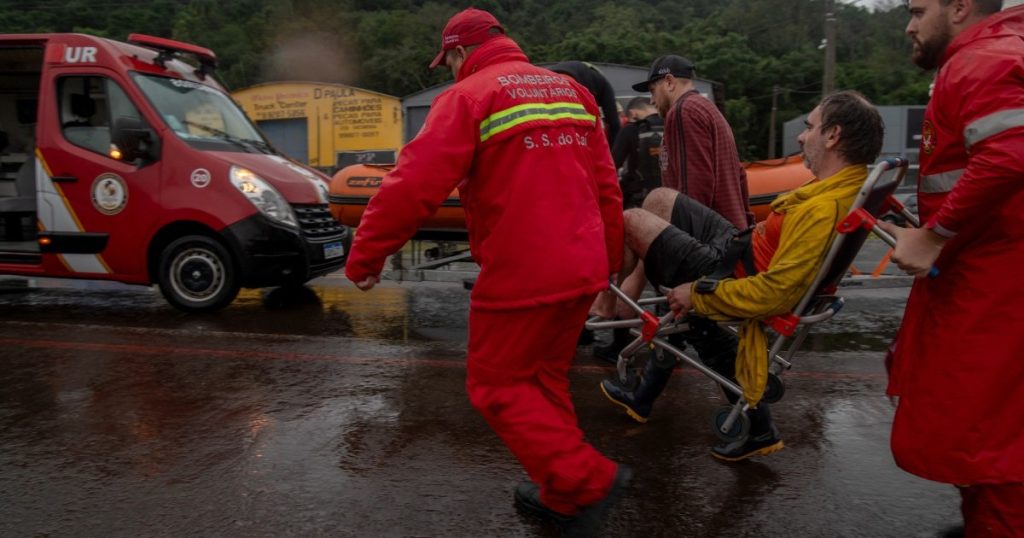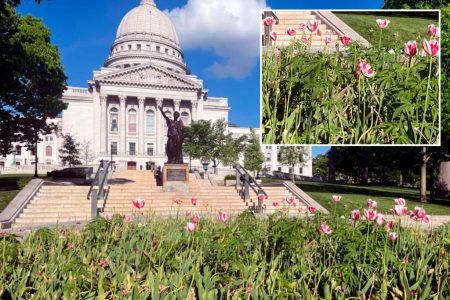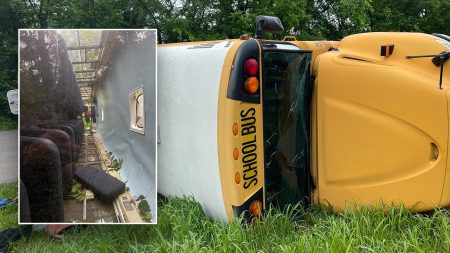Brazil’s southern Rio Grande do Sul state has been hit hard by overpowering floods and mudslides caused by torrential rains, resulting in a death toll of at least 56 people and displacing tens of thousands from their homes. The country’s civil defence agency has raised the death toll and warned that rising water levels are straining dams and threatening the metropolis of Porto Alegre. Local authorities predict that the flooding will only get worse as storms continue to ravage the region, leading to devastating consequences for residents.
The flooding, described as Brazil’s worst in 80 years, has affected at least 265 municipalities in Rio Grande do Sul, leaving at least 74 people injured, displacing more than 24,000 individuals, and causing property damage to 350,000 others. Residents have witnessed their homes and possessions washed away, with many losing their lives in the disaster. The situation has left some cities and towns completely isolated, without access to electricity or telecommunications, while others are facing the heartbreaking decision to abandon their livestock in the face of rising water levels.
As the rainfall continues unabated, concerns have been raised about the stability of four of the state’s dams, potentially leading to a new emergency situation. The federal government has mobilized resources to assist in relief efforts, dispatching aircraft, boats, and over 600 soldiers to clear roads, provide essential supplies, and establish shelters for those affected by the floods. Local volunteers have also joined in the search and rescue operations to locate missing individuals and provide assistance to stranded residents.
Climatologist Francisco Eliseu Aquino attributed the catastrophic storms to a “disastrous cocktail” of global warming and the El Nino weather phenomenon. He highlighted Brazil’s susceptibility to extreme weather events due to its geographic position, where tropical and polar air masses often collide, exacerbating the impact of climate change. The combination of these factors, along with El Nino’s influence on atmospheric conditions, has intensified the severity of the recent weather events in the region. This situation has been further exacerbated by a cyclone in September that claimed the lives of at least 31 people, underscoring the vulnerability of Brazil to such natural disasters.
The devastating floods and mudslides in southern Brazil serve as a stark reminder of the urgent need to address climate change and its impact on vulnerable communities. The unprecedented scale of the disaster has left residents reeling from the loss of lives, homes, and livelihoods, with little respite in sight as the rains persist. The collaborative efforts of government agencies, first responders, and volunteers in providing relief and support to those affected by the floods underscore the resilience and solidarity of Brazilian communities in times of crisis. As the country grapples with the aftermath of this catastrophe, it is imperative to prioritize proactive measures to build resilience, mitigate climate-related risks, and safeguard the well-being of its citizens in the face of future disasters.















